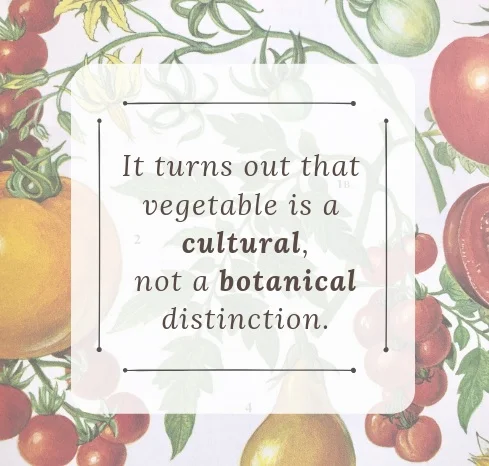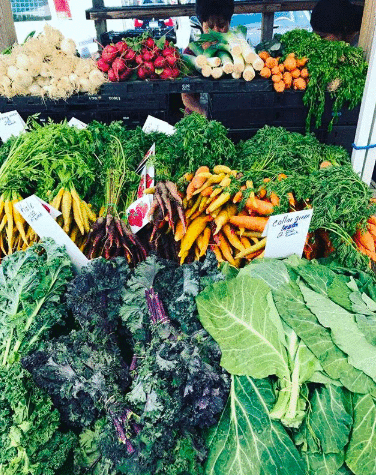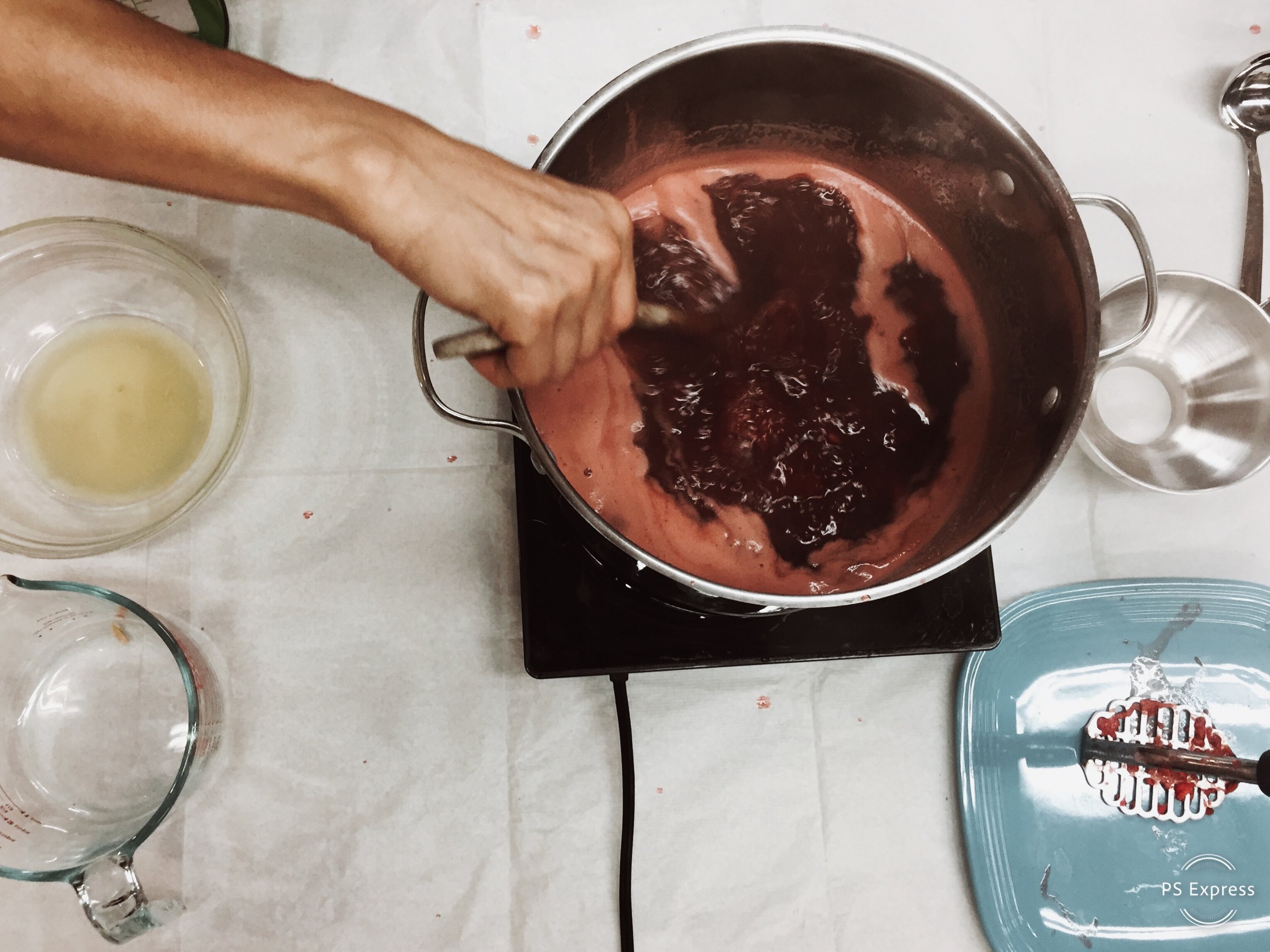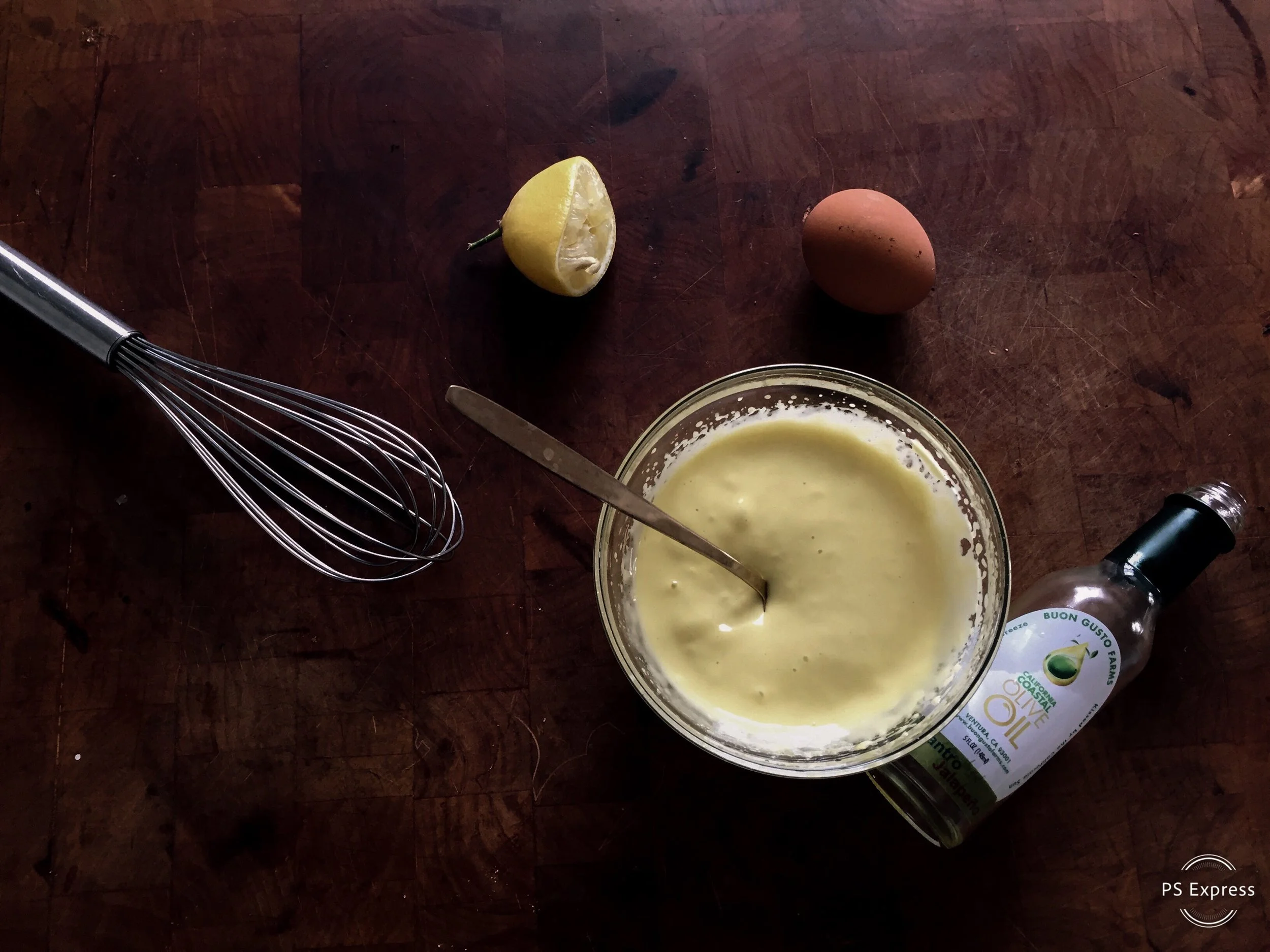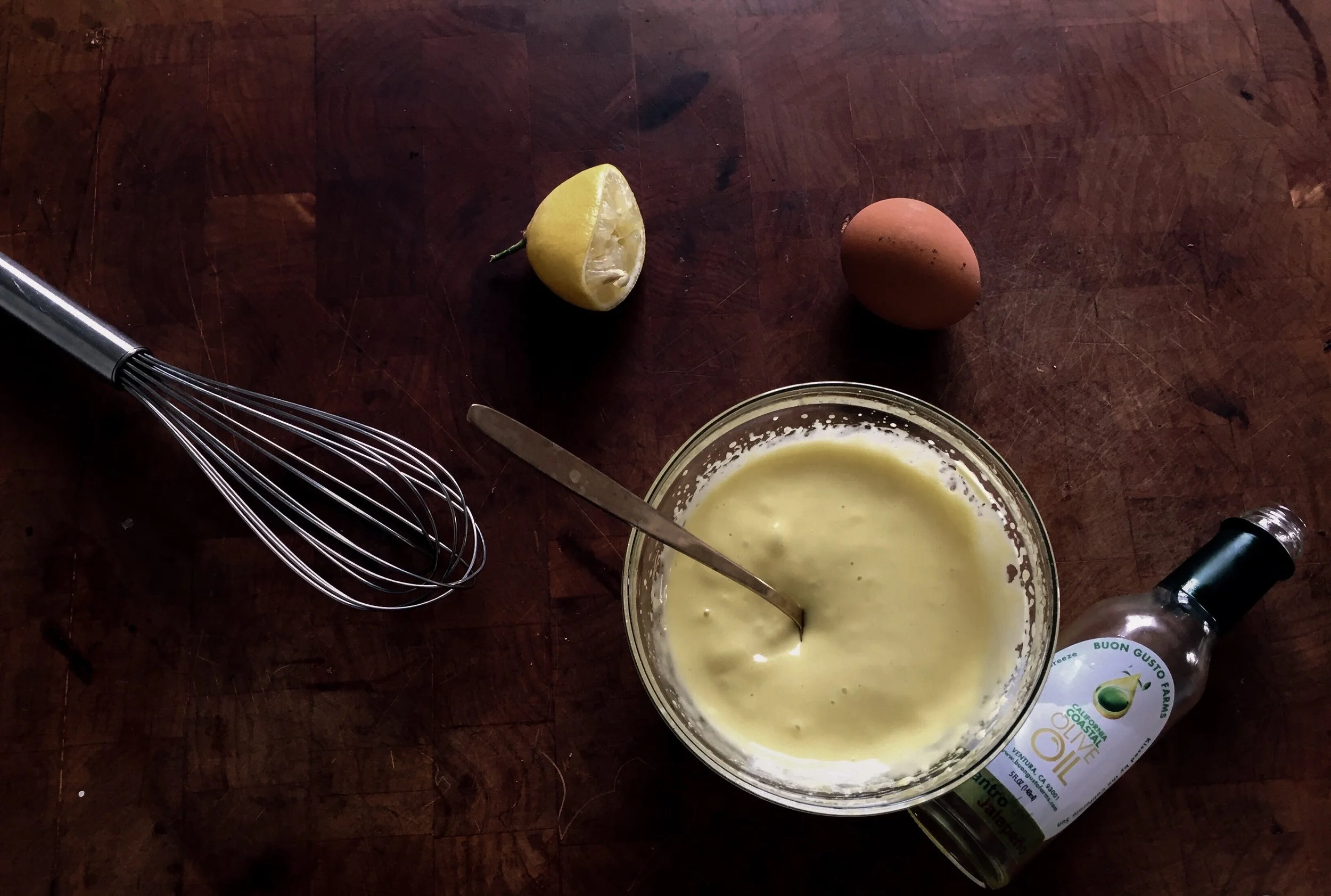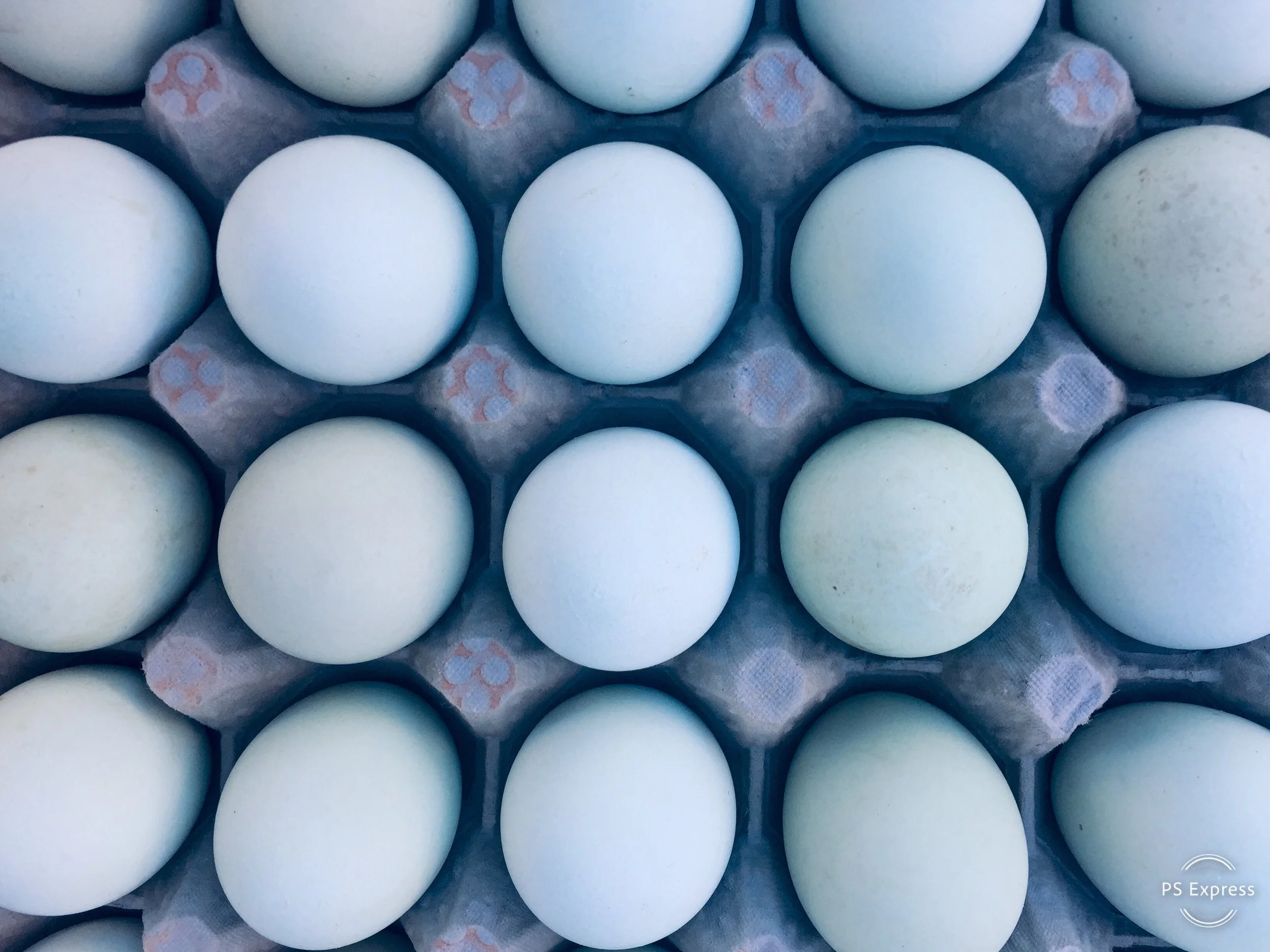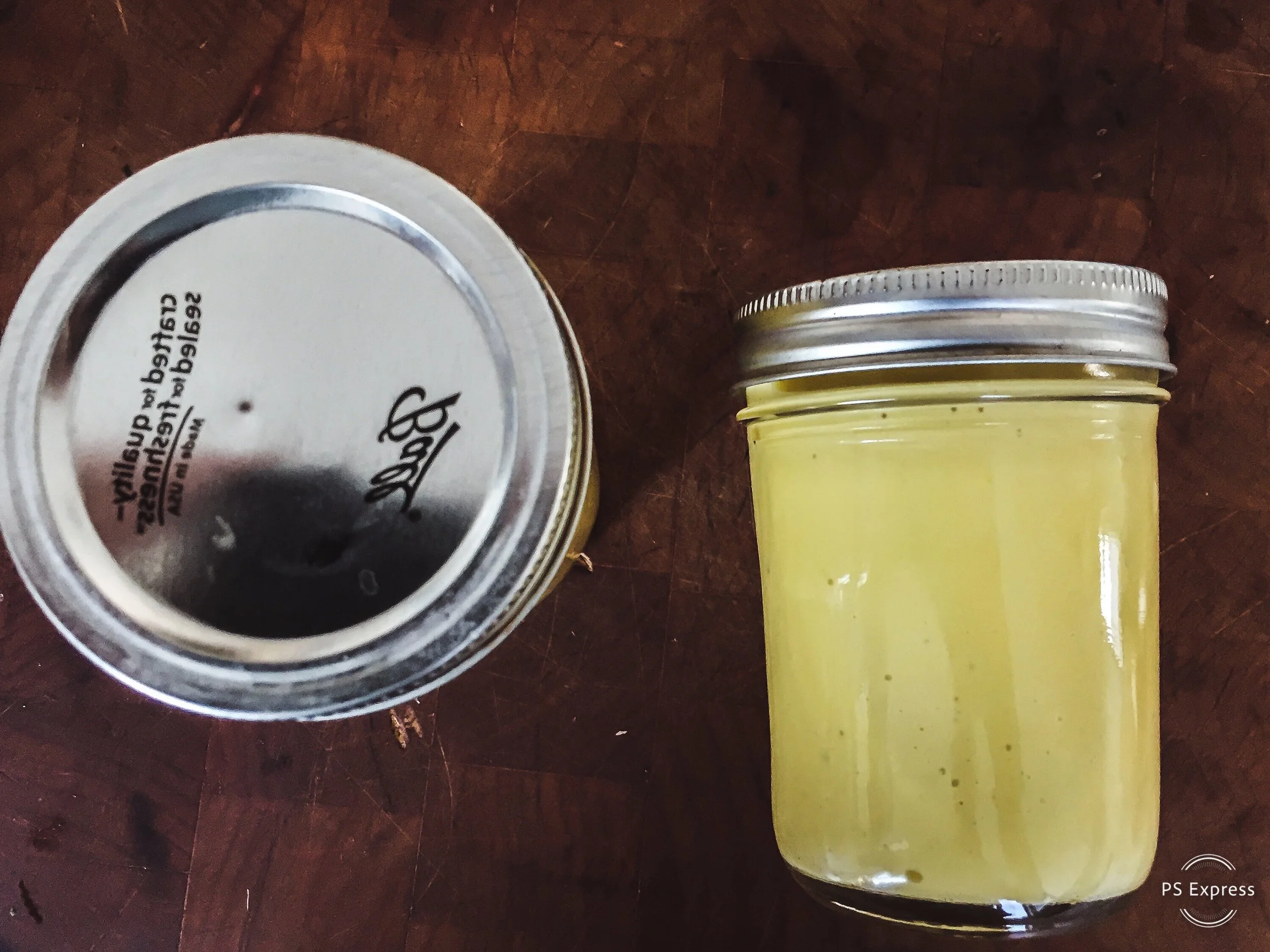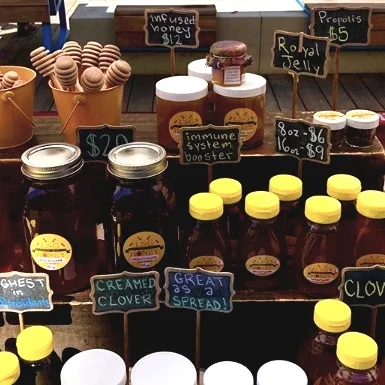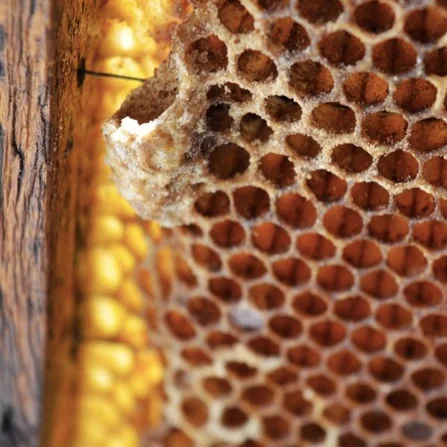6 Recipes To Change How You Eat Cucurbits!
What do melons, cucumbers, squash and pumpkins have in common? They’re all members of the cucurbit family! And boy oh boy is this family versatile! Savory melon? Sweet zucchini? Get our favorite recipes!
What do melons, cucumbers, squash and pumpkins have in common? They’re all members of the cucurbit family! Cucurbits are high in B vitamins and can be found all over the world (the oldest cucurbitaceae fossil was found in Montana and hails from the Paleocene epoch). They thrive during the warmest months and their high water content keeps us cool as a cucumber!
Best yet, this family is versatile! From cantaloupe to zucchini, cucurbits can be found in sweet and savory dishes! Ready for inspiration? Start scrolling!
Recipe Courtesy of Bon Appetite
Photo Credit: @devan.grimsrud
INGREDIENTS
½ 6-lb. baby seedless watermelon
2 Tbsp. fresh lime juice
1 Tbsp. fish sauce
1½ tsp. sugar
2 sprigs basil, plus leaves for serving
¼ cup salted, dry-roasted peanuts
2 Tbsp. extra-virgin olive oil
Flaky sea salt
Preparation
Halve melon crosswise. Working with one half at a time with the cut side facing up, slice off irregular bite-size pieces.
Stir lime juice, fish sauce, sugar, and 1 Tbsp. water in a large bowl until sugar is dissolved. Lightly crush 2 basil sprigs by scrunching up in your hand and add to dressing along with watermelon; toss gently until coated.
Top with peanuts and basil leaves, drizzle with oil, and season with salt.
Recipe Courtesy of Bon Appetite
photo credit: @feastingathome
INGREDIENTS
1 pound cucumbers, halved, seeds removed
1 pound tomatillos, husks removed, rinsed
½ medium onion, thinly sliced, rinsed under cold water
½ poblano chile, seeds removed
1 garlic clove
¼ cup olive oil
¼ cup unseasoned rice vinegar
1 tablespoon chopped parsley
1 tablespoon chopped cilantro, plus leaves for serving
Kosher salt, freshly ground pepper
PREPARATION
Blend cucumbers, tomatillos, onion, chile, garlic, oil, vinegar, parsley, and chopped cilantro in a blender until very smooth; season with salt and pepper. Transfer to an airtight container, cover, and chill at least 2 hours. Serve topped with cilantro leaves.
Do Ahead: Gazpacho can be made 2 days ahead. Keep chilled.
Recipe courtesy of Bon Appetite, May 2003
Photo Credit: @kingtacos1
Ingredients
4 1/2 cups chopped seeded & peeled cucumbers (about 4 medium)
4 cups cold water
2 cups ice cubes
1 cup sugar
2/3 cup fresh lime juice
2 large pinches of salt
Additional ice cubes
Preparation
Combine 2 1/4 cups chopped cucumbers, 2 cups water, 1 cup ice cubes, 1/2 cup sugar, 1/3 cup lime juice, and 1 pinch of salt in blender. Blend until sugar dissolves and mixture is smooth but slushy, about 2 minutes. Transfer mixture to pitcher. Repeat with remaining chopped cucumbers, 2 cups water, 1 cup ice cubes, sugar, lime juice, and salt.
Place additional ice cubes in 8 glasses. Fill with cucumber drink.
Recipe adapted from: simplyscratch.com
Ingredients
2 cups freshly grated zucchini
1 cup organic whole wheat flour
1 cup organic all purpose flour
3 tablespoon cinnamon
2 teaspoons baking soda
1 teaspoon kosher salt
1/4 teaspoon baking powder
3 whole eggs
1 1/2 cups of honey
1/2 cup good olive oil
1/2 cup unsweetened applesauce
3 teaspoons pure vanilla extract
INSTRUCTIONS
Preheat your oven to 350 degrees and butter, butter two 9x5 loaf pans and line with parchment or butter and flour them, omitting the parchment paper.
In a large bowl, sift together the flour, cinnamon, baking soda and baking powder. Once sifted measure and add in the kosher salt.
In a separate bowl whisk together the eggs, honey, applesauce, oil and vanilla. Add in the grated zucchini. Pour the wet mixture into the bowl with the dry ingredients, stir until just incorporated and divide the chocolate zucchini bread batter among the two prepared pans. (about 2-1/2 to 3 cups per pan)
Bake in preheated oven for 40-45 minutes or until a tester comes back with a few crumbs still attached.
Allow zucchini bread to cool completely before removing and slicing.
Recipe adapted from: https://www.spicesinmydna.com/
Photo Credit: www.spicesinmydna.com
Recipe
Melon simple syrup
1 c. water
3/4 c. honey
2 c. cantaloupe cubes or balls
Cocktail
2 oz. melon simple syrup
1.5 oz. gin
1 oz. seltzer water*
melon balls/cubes
cucumber slices
ice
fresh mint
Directions
In a small saucepan, bring the water and honey to a boil. Let boil for 30 seconds, remove from heat, and let cool completely. Once cooled, add to a blender or food processor with the cantaloupe cubes/balls. Blend until completely smooth.
Add ice to a cocktail shaker along with a fresh mint leaf. Add the simple syrup and gin, and shake for 30 seconds. Fill glass with ice, a few melon balls and cucumber slices, and then pour in the drink. Top with seltzer, stir to combine, and garnish with mint, and extra cantaloupe/cucumber slices!
Recipe Courtesy of Bon Appetite
8 tablespoons extra-virgin olive oil
Add reserved squash and almonds to kale; toss well and season with pepper. Divide among bowls; drizzle with more dressing, if desired. Using a vegetable peeler, shave Parmesan over.
3 tablespoons balsamic vinegar
1/2 medium shallot, minced
1 teaspoon Dijon mustard
Kosher salt and freshly ground black pepper
1 1/2 cups 1/2-inch cubed butternut squash
1 bunch kale, stems removed, cut into 1/2-inch wide ribbons (about 5 cups)
3/4 cup whole almonds, toasted, coarsely chopped
Parmesan (for shaving)
Preheat oven to 425°. Line a baking sheet with foil. Whisk 5 Tbsp. oil, vinegar, shallot, and Dijon mustard in a small bowl. Season to taste with salt and pepper. Set aside. Combine squash and 2 Tbsp. oil in a medium bowl and toss to combine; season with salt and pepper. Transfer squash to prepared baking sheet and roast, turning occasionally, until squash is tender and lightly golden, about 20 minutes. Let cool slightly.
Meanwhile, heat remaining 1 Tbsp. oil in a large skillet over high heat. Add kale and cook, tossing frequently, until bright green and slightly wilted, 1–2 minutes. Remove from heat; add 3–4 Tbsp. dressing and toss to coat. Transfer kale to a baking sheet and cool slightly, about 5 minutes.
Add reserved squash and almonds to kale; toss well and season with pepper. Divide among bowls; drizzle with more dressing, if desired. Using a vegetable peeler, shave Parmesan over.
Aubrey Yarbrough is the Community Development Manager for Farmer Mark. Before moving to LA she ran her own organic farm and cooked on the garde manger station of the award winning Elements restaurant in Princeton, NJ. She has contributed poetry to New American Writing and prose to Edible Jersey.
What is a Vegetable?
What is a vegetable? If tomatoes are fruits and carrots are roots and celery is a stem, what exactly is a vegetable?
What's a Vegetable?
What is a vegetable? I'm serious. Smarty-pants like to point out that tomatoes are a fruit, but so are eggplant and zucchini. If carrot is a root, and celery is a stem, broccoli is a flower, and yes, tomato is a fruit, then what exactly is a vegetable?
According to Wolfgang Stuppy, the research leader in Comparative Plant and Fungal Biology at the Royal Botanic Gardens, Kew & Wakehurst Place: “the term vegetable doesn’t exist in botanical terminology.” Simple as that.
Veggies might not exist botanically, but they’re not going anywhere culturally. So we're back to square one: what’s a vegetable?
A quick flip through the dictionary is surprisingly unhelpful. The first entry in the Oxford English Dictionary is so broad as to include “any living organism that is not an animal.” Under these guidelines oak trees and hydrangeas could end up on our dinner plates. Less archaic definitions include words like “edible” and “savory.” Leading us back to well, vegetables.
As it turns out, when we’re drawing distinctions between vegetables and fruit, it's not a plant part’s botanical function that matters, but it’s culinary one. And any kid could tell you what’s what: vegetables are dinner and fruit is dessert. We knew it all along.
So why did we ask this unexpectedly complicated question? Right: tomatoes. Like many other savory vegetables, tomatoes are neither root, nor stalk, nor leaf, but—botanically speaking—fruit. And if you’re having a botanical discussion, that’s the word you should use. But if you’re in the kitchen, for the love of pizza call them vegetables.
Knowing the botanical purpose of all our vegetables can help us feel connected to our food, and grateful for it. But the next time some pseudo-smarty pants tells you that tomatoes are fruit... please let them know that strawberries are in fact a vegetable.
Aubrey Yarbrough is the Community Development Manager for Farmer Mark. Before moving to LA she ran her own organic farm and cooked on the garde manger station of the award winning Elements restaurant in Princeton, NJ. She has contributed poetry to New American Writing and prose to Edible Jersey.
A Case for Refill Stations
Go on a journey towards more zero-waste thinking with us and visit the Westwood Village market on the 4th Thursdays of the month when we have a Refill Station with Sustain LA!
We’ve heard the statistics…
In the Los Angeles area alone, 10 metric tons of plastic fragments—like grocery bags, straws and soda bottles—are carried into the Pacific Ocean every day.
50 percent of the plastic we use, we use just once and throw away.
The average American throws away approximately 185 pounds of plastic per year.
We currently recover only five percent of the plastics we produce.
The Great Pacific Garbage Patch, located off the coast of California is the largest ocean garbage site in the world. This floating mass of plastic is twice the size of Texas, with plastic pieces outnumbering sea life six to one.
Photo curtesy of BlueOcean.net
All of which are reason why the #ZeroWaste and #ZeroWasteJourney trends on social media are becoming increasingly pertinent. Refill Stations are for those on a #ZeroWasteJourney, making any effort they can to reduce single-use plastic consumption.
Refill stations, like Sustain LA who will be at our Westwood Village Farmers’ Market every fourth Thursday of the month, bring bulk items like detergent, shampoo, natural cleaners, deodorants, and more for people to refill their own glasses or bottles. Other zero-waste approved utilitarian items like reusable napkins, stainless steel straws, or metal lunch boxes can also be found at a refill station.
Thoughts leaders in this space caution that the journey to reducing plastic is not about perfection. And while our Markets are not free from plastic, we are doing our best to reduce market-wide use and to provide opportunities for market shoppers to practice zero-waste intentions too.
Remember, our Take a Bag, Leave a Bag program is there for you to take advantage of if (and when) you forget a reusable bag. And as the name suggests, consider donating an under-loved canvas bag(s); we will gladly add it to our collection!
If you frequent the farmers’ market for the health of your body and for our environment, consider visiting us when we have a popup refill station and go on a journey towards more zero-waste thinking with us!
An Earth Day Scavenger Hunt!
Get the kids to explore the market and learn what’s in-season fruits and meet our farmers. Answer or draw the questions for a special Market prize! Download and print at home or grab one at our Info Booth at the market.
Get kids exploring the market, learning about fruits and veggies, and our farmers at the Market for Earth Day.
Write or draw the answer for a prize from our Info Booth!
Find a purple fruit or vegetable. Name it or draw it!
Find a green food that you have not tasted before. Name it or draw it!
Find something that grows underground. Name it or draw it!
Ask a farmer what time they woke up this morning & how long it took them to get to the market. Answer in time or distance:
* Fact: The average supermarket produce travels 1,500 miles!What booth is the Take a Bag, Leave a Bag basket next to? *Fact: 160,000 plastic bags are used globally every second!
Download the scavenger hunt here and print at home, or get one at the info tent!
Bucks for Buckets
Hermosa Beach market is keeping Hermosa Clean and Green! Join us on the first Wednesday of the month for a beach clean-up. Borrow a pail from the Info Tent and get Market Bucks for participating! #HBMarketCares.
Beginning May 1st, our Hermosa Beach Market will provide pales for shoppers to collect beach rubbish and will give out $1 market buck for each filled container of beach trash!
Who: You! Your Family! Your Friends!
What: Beach Clean for Market Buckets!
When: May 1st, 12pm - 6pm
(and every 1st Wednesday thereafter)
Where: 1 Pier Avenue, just before the strand, at the Farmers’ Market
Why: To keep Hermosa Beach clean + green from the inside + out!
Collection pales will be onsite at the Info Booth inside market for you to borrow.
Get Market Bucks for every pale of found beach trash collected!
Use #HermosaMarketClean in your photos and to help us spread the word!
Join us and our guest co-hosts, Leadership Hermosa for a day of doing-good at the farmers’ market, for happy, healthier, and more fulfilled tomorrows!
Jam Making: True Confessions of a Locavore
Eating in-season doesn’t mean depriving yourself, if you preserve when the harvest is bountiful! And this Strawberry Jam with Thyme and Honey is a delicious place to start.
A couple months back, Market Manager Martha and I were invited to teach a cooking class at the Playa Vista Public Library. Our class was scheduled in the after-school bracket, and we were encouraged to make it both engaging for adults and accessible for kids. We settled on strawberry jam with thyme and honey. Strawberries are almost always in season, and jam is easy to make—but the honey and thyme in this recipe lend it sophistication. This jam will do on a PBJ, but it just begs to be paired with a bloomy rind cheese.
We decided to get our strawberries from C&L, thyme from Backyard Organic, our honey from LSG, and a lemon (to balance out the flavor) from Pedro's.
Pectin, a fiber found in the cell walls of many plants, is what gives jams their sticky consistency. Strawberries don't have much—but apples do! We got apples from YNT and practiced simmering their peels until our jam jelled, and the strawberry-honey-thyme balance was something we wanted to show off. We and our jam were set.
And then it started raining, torrentially.
Many foodies (of which, I'm one) will tell you never to wash a strawberry. With a thin, porous skin, they're little fruit sponges. When they get washed, or rained on, they get water logged, go bland. When they stay wet for days on end their flavor wains, drains, and they rot. The purpose of this jam class was to showcase cooling with local produce, but after five days of heavy rains, there wasn’t a fresh pint of strawberries to be found in local markets. But purchasing berries from the supermarket felt like a betrayal. We were beginning to despair, and then we checked our freezers!
Both Martha and I are in the habit of buying extra, and preserving produce. Together, we had enough frozen strawberries to make a large batch of jam! Whats more, having been frozen at their prime, they were bursting with flavor. Eight showed up for our jam making class in the library, and after stirring and chopping, each took home a jar of local jam: all because we planned ahead.
It's April again, and—again—it's easy to be a locavore. The sun is shining, she skies are blue, and artichokes and asparagus are popping up in farmers' markets. This is the time—just weeks out of winter—to think of the future. This week at the farmers’ market, I’m planning to buy an extra pint of strawberries, an extra bunch of asparagus, and an extra bag of fava beans, to pickle or preserve or stick in the freezer for a rainy day. Being a locavore doesn't have to mean going without. You can have your favorite produce all year long (and eat it too), as long as you prepare.
STRAWBERRY THYME JAM
Adapted from thekitchn.com
Makes 1 pint
INGREDIENTS
1 quart organic strawberries (approximately 3 cups)
3/4 cup honey
5 sprigs thyme
Peels from two organic apples
Squeeze of lemon
INSTRUCTIONS
Place a saucer or small plate in the freezer
Wipe strawberries with damp towel (avoid rinsing if possible). De-stem strawberries, halve them and crush them with your fingers.
Peel apples (aim for broad, thick peels that will be easy to remove from the jam later)
Strip thyme leaves from stem
Put strawberries, honey, apple peels, thyme and lemon in copper or stainless steel pot over high heat. Mash with potato masher until strawberries are evenly smashed
Bring to a bubble and cook over high heat for 6-10 minutes, stirring often. If you have a candy thermometer, we are looking for the jam to reach 210ᵒ, if not perform the plate test!
(This trick comes from jam master Jessica Koslow’s cookbook, “Everything I want to Eat, Sqirl and the New California Cooking.”) Spoon a dollop of jam on a frozen saucer and put it back in the freezer for one minute. Swipe your finger through the jam. If the jam parts and does not run back together — it’s ready! If not, keep put the plate back in the freezer, keep cooking the jam, try again in a few minutes.
When the plate test tells you you’re done, pick apple peels out of jam with a fork, and funnel hot jam into a clean pint jar. Your jam will keep for months in the fridge!
Aubrey Yarbrough is the Community Development Manager for Farmer Mark. Before moving to LA she ran her own organic farm and cooked on the garde manger station of the award winning Elements restaurant in Princeton, NJ. She has contributed poetry to New American Writing and prose to Edible Jersey.
Brothers Products : Notes from a Hummus Snob
Authentic hummus in LA? You can get it at the Hermosa Beach Farmers’ Market!
I didn’t use to buy pre-packaged hummus. Ever.
Don’t get me wrong, I love hummus, but after five years of living in the Middle East, the region spoiled me. It turned me into a hummus addict and a hummus snob. State-side, I find prepackaged hummus to have an off-putting, acidic tinge. The chickpeas are stale, the garlic is strong. In the middle east the chickpeas, tahini, lemon, olive oil, salt, and garlic are whipped until the individual components are almost undetectable. You’re less aware of any one ingredient, and the resulting dip is more compelling. Authentic hummus is deceptively simple, and surprisingly hard to come by in America.
Those of us who have tasted the genuine article in its region of origin, are left condemned to make our own, or live with an unrequited longing for this simple salata.
...Or so I thought before I tasted Brothers hummus.
When I moved to LA this past August, I left my food processor in storage. I was new in town and needing a hummus fix, but I didn’t have the tools to make my own. So when I saw the Brothers Products stand at the Hermosa Beach farmers market, I sampled out of desperation.
And what I tasted brought tears to my eyes. For a brief instant, I was transported to a little stone cafe in the Arab quarter of Jerusalem. I could almost hear the call to prayer.
Emran, the man behind the Brother’s booth, saw that I was moved and began to reminisce. He'd first sampled Brother’s hummus five years earlier and said the taste, “took me back home.” No restaurant or store-bought product compared. “Brothers is the best in LA,” he said. I have to agree.
It’s now been six months since my move to LA. I’ve had my food processor for months, but I haven't yet made one batch of hummus. I don't have to. I get the real deal every week at the Hermosa Beach market.
You can try a sample any Wednesday, from 1pm-6pm on the Hermosa Beach Pier Plaza.
Aubrey Yarbrough manages the Playa Vista, Westwood and Hermosa Beach Farmers' Markets for Farmer Mark. Before moving to LA she ran her own organic farm and cooked on the garde manger station at the award winning Elements restaurant in Princeton, NJ. She has contributed to Edible Jersey and her poetry will appear in the forthcoming issue of New American Writing.
My Favorite Health Food is Mayonnaise.
Can mayonnaise be health food? Market Manager Aubrey thinks so! Find out why!
I love mayonnaise. The, velvety emulsification of egg yolks and olive oil is both versatile and fancy, both haute cuisine and healthy. Why not? Scientists and nutritionists agree, egg yolks and olive oil are good for you. And whisking them together with a squeeze of lemon and a dollop of dijon doesn’t change that.
I know what you're thinking. Mayo has a nasty reputation, and for some good (and some not so good) reasons. The conventional condiment—made of vegetable oil and commercially farmed eggs—is often topped off with "flavors" and calcium Disodium EDTA. I'll leave that jar on the shelf. But let's get real. The reason most of us have been shy about the white stuff can be summed up in one word: FAT. For decades we were told that eggs—rich in cholesterol—were best avoided. And that oil, regardless of its type, was bad news.
It turns out we were wrong. Nutritionists now recognize that healthy fats are an important part of a balanced diet. Some suggest that healthy fats (like egg yolks and olive oil) might even help certain people lose weight! Drumroll: Mayo!
I make my homemade mayo as they do in the South of France, with extra virgin olive oil and with lemons! And because I use free-range, farmers’ market yolks, it turns a delicious golden hue. Buon Gusto's olive oil adds a spicy kick and lemon provides a fruity tang. Added bonus: nearly everything in this recipe be found locally at the farmers market!
RECIPE
2 free range egg yolks, separated
1 cup Buon Gusto olive oil (available at our Playa Vista market)
1/2 tsp salt
lemon juice, (start with 1/2 lemon, more to taste)
1 tsp good dijon (optional)
TECHNIQUE
Great mayo is a matter of technique. You can use a whisk in a pinch, but I recommend using electric beaters if this is your first time.
Place egg yolks, lemon juice, and dijon in a medium sized bowl. Beat with electric beaters until combined. With the beaters on high, drizzle olive oil in a thin steady stream, over the beaters. Adding the oil, veeeeery slowly, is the one and only trick to making great mayo. As you add the oil, the mixture will thicken and the color will fade. When your mixture is stiff, you're done! At this point taste and add salt accordingly. You also might want to add more lemon or dijon, depending on your preferences.
FIX BROKEN MAYO
If you find that your mayo has separated—don't despair! Here's a secret: it's easier to fix broken mayo than it is to make mayo right the first time! Take your broken mayonnaise mixture and pour it into a liquid measuring cup, or any bowl with a spout that's easy to pour from. Use a rubber spatula to get all that eggy oil out of the mixing bowl and set the broken sauce aside. Now, separate another egg, and drop the yolk in your mixing bowl. From this point on, it's just like before. You're going to whisk the yolk quickly and drizzle slooooowly, BUT in place of olive oil, drizzle your broken mayo mixture. Beat the egg yolk on high and slowly pour the broken mayo over the beaters in a thin, steady stream. The broken mixture and your mayo will come together in no time! Once it has a uniform consistency and an opaque color, proceed with olive oil, completing the original recipe, adding up to an additional cup of olive oil to balance the extra yolk. You'll probably want more lemon and dijon too, but taste first to be sure.
VARIATIONS…because mayo is versatile!
* Mexican Fusion Mayo: make the spread with Buon Gusto's Cilantro Jalapeño olive oil!
* Aioli: omit lemon, add garlic and voila!
* Cesar Salad Dressing: add anchovies and a touch more dijon and lemon! Whip to a semi-loose consistency. Whisk in grated parmesan to finish.
* Traditional American mayo: substitute neutral tasting avocado oil and use distilled vinegar in place of lemon.
Celebrate healthy fats!
And don't feel guilty!
Aubrey Yarbrough is the Community Development Manager for Farmer Mark. Before moving to LA she ran her own organic farm and cooked on the garde manger station of the award winning Elements restaurant in Princeton, NJ. She has contributed poetry to New American Writing and prose to Edible Jersey.
Just a Teaspoon of Honey
What is the value of a teaspoon of honey? Robin of LSG Honey increases our appreciation for honey with one surprising fact.
How much honey does one bee make in its whole life? The answer may surprise you, unless you’ve met Robin Ghermezi, the apiarist and educator behind LSG Honey.
Robin Ghermezi became a beekeeper after retiring from the tech industry. He’s now been collecting honey for six years, but he still exudes the zeal of a recent convert. At the market, he’s generous with his honey samples, and if you linger long enough at his booth, he might convince you that bees are among the most fascinating creatures on earth.
When I approached his stand at the Playa Vista market on a recent Saturday, he was handing a spoonful of honey to a dazed looking customer.
“Wait,” the man said, “you’re telling me one bee makes a quarter teaspoon of honey…” he looked to the woman by his side in disbelief, “in its whole life?”
Robin grinned as he nodded.
“That means,” the man went on, “that the honey left on my spoon each morning…that’s like, one bee’s whole life’s work?” Robin was still smiling as he reached into a jar, producing a sample of honey for me to taste. It was buckwheat, the color of weak coffee and just a touch bitter: a perfect pairing for stinky cheese. I popped the sample in my mouth and for just a moment, I felt luxurious.
Robin produce more samples for me to try—avocado, wildflower, and a mesquite honey that tasted herbal and faintly smoky—and I lingered in his stall, eavesdropping on the customers beside me. They were strategizing. Robin’s story had transformed the honey in their hands into something valuable-verging-on-precious. They were determined never to waste another drop. Should they use a spoon or a wooden honey dipper? Should they leave the dipper in the honey jar permanently so it wouldn’t need washing—but what about ants?
Robin was unfazed. “One solution,” he said, shrugging, “is to drill a hole in to top of a honey jar, and poke the handle of the dipper stick through it.” Then he handed me a spoonful of lavender honey and began to laugh, conceding that they weren’t the first customers to respond to his fact with awe. At one point, so many customers were concerned about wasted honey, Robin was bringing a drill to the market, tricking-out honey jars so dippers could live in them.
The price of honey had not risen during this exchange, but it had, for me, grown vastly more valuable. For just one taste of honey, a foraging bee spent her days sipping nectar from flowers. She ferried it back to her hive in her tiny crop and, mouth to mouth, passed the nectar to a processor bee. In turn, the processor bee passed the nectar to another processor, mouth to mouth, in an intimate fire-line. Along the way, enzymes from each bee’s crop, mixed with the nectar making it shelf-stable. When the nectar was finally packed into a waxy cell, the bees fanned it with their wings, evaporating excess water, and nectar became honey. Robin tended the hive, carefully, skimmed off just enough honey, to share with us. We can put it in our tea, use it baking, or simply taste it by the teaspoon and marvel.
LSG hives are never treated with chemicals. Their bees collect nectar in nature and produce honey in their hives, one teaspoon at a time, as bees have been doing for a very long time. You can meet Robin and sample LSG honey at the Playa Vista Farmers’ market every Saturday from 9am-2pm.
Aubrey Yarbrough is the Community Development Manager for Farmer Mark. Before moving to LA she ran her own organic farm and cooked on the garde manger station of the award winning Elements restaurant in Princeton, NJ. She has contributed poetry to New American Writing and prose to Edible Jersey.
In Season Now: Ice Cream Beans!
A bean that tastes like ice cream? It might sounds too good to be true, but these beans are both real and good for you!
Q: What looks like a fava bean and tastes like ice cream… ?
A: Ice-cream beans!
Botanically speaking, the ice cream bean, or Inga Edulis, is in the same family as green beans and peanuts. But rather than eating the seed inside the pod, you focus on the pith. The fluffy pulp surrounding the bean is sweet and gooey. Working it off a beans is reminiscent of sucking mango off the pit, but this tastes distinctly like vanilla ice cream.
Mexico is the northern boundary of this tropical fruit's native habitat, but Pedro’s Organic Farm is growing them in Southern California! You can find Ice Cream Beans at their stand at any of our four Farmer Mark markets.
Need a nudge? Their pulp is a good source of antioxidants, dietary fiber, polyphenols, and anti-inflammatories. The seeds are inedible raw, but can be eaten roasted and are a good source of protein.
Aubrey Yarbrough is the Community Development Manager for Farmer Mark. Before moving to LA she ran her own organic farm and cooked on the garde manger station of the award winning Elements restaurant in Princeton, NJ. She has contributed poetry to New American Writing and prose to Edible Jersey.














